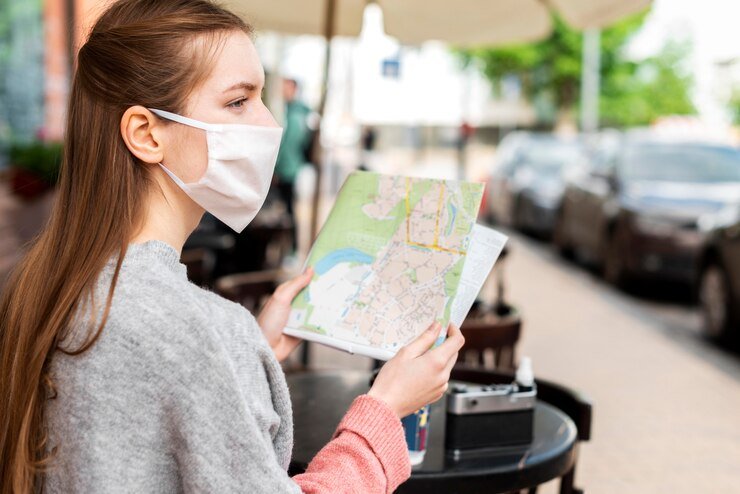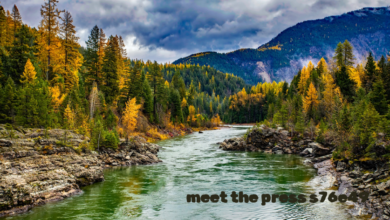Mastering Travel with Temperature Conversions

Traveling can be exhilarating, but it can also bring unexpected challenges. One such challenge is understanding foreign weather reports. This might seem trivial until you realize it could determine whether you pack a swimsuit or a parka. For travelers, grasping temperature conversions, especially from Celsius to Fahrenheit (like knowing that 37c to f is 98.6 degrees Fahrenheit) is crucial. In this guide, we’ll break down the science behind these temperature scales, offer practical tips for quick conversions, and explore why this knowledge is essential for a smooth travel experience.
The Basics of Temperature Scales
Temperature is a measure of how hot or cold something is. The two most common scales we encounter are Celsius (°C) and Fahrenheit (°F). Understanding these scales can help in making sense of weather forecasts and planning your travel wardrobe accordingly.
Celsius Scale
The Celsius scale, also known as the centigrade scale, is used by most countries worldwide. It sets the freezing point of water at 0°C and the boiling point at 100°C under standard atmospheric conditions. This scale is straightforward and widely adopted due to its simplicity.
Fahrenheit Scale
The Fahrenheit scale, mainly used in the United States, sets the freezing point of water at 32°F and the boiling point at 212°F. This scale may seem more complex, but it is deeply rooted in American culture and daily life, making it essential for travelers visiting the U.S.
Why Do We Have Different Scales?
The existence of different temperature scales is a result of historical preferences and scientific developments. Each scale has its advantages and cultural significance, making it important for travelers to understand both.
Practical Tips for Quick Mental Conversions
Being able to perform quick temperature conversions can save you from packing the wrong clothes or being unprepared for weather changes. Here are some easy methods to convert temperatures between Celsius and Fahrenheit on the fly.
Simple Conversion Formula
To convert Celsius to Fahrenheit, use the formula:
\[ \text{Fahrenheit} = (\text{Celsius} \times 9/5) + 32 \]
For example, to find 37c to f:
\[ \text{Fahrenheit} = (37 \times 9/5) + 32 = 66.6 + 32 = 98.6°F \]
Approximate Mental Math
If precise calculations aren’t necessary, you can use an approximate method for mental conversions:
- To convert Celsius to Fahrenheit, multiply by 2 and add 30.
- To convert Fahrenheit to Celsius, subtract 30 and divide by 2.
For instance, using the approximate method for 37c to f:
\[ (37 \times 2) + 30 = 74 + 30 = 104°F \]
Though less accurate, it’s quick and often close enough.

Remember Key Benchmarks
Memorizing a few key temperature points can aid quick assessments:
- 0°C = 32°F (Freezing point)
- 20°C = 68°F (Room temperature)
- 37°C = 98.6°F (Human body temperature)
- 100°C = 212°F (Boiling point)
The Impact of Temperature Variations on Travel
Understanding temperature variations is essential for travelers because it influences everything from packing to daily activities during your trip.
Dressing Appropriately
Knowing that 37c to f is 98.6°F informs you that it’s very warm, suggesting light, breathable clothing. Conversely, knowing temperatures around freezing point helps in packing adequately for cold destinations.
Planning Activities
Temperature impacts the feasibility of certain activities. For instance, extreme heat might make hiking uncomfortable or unsafe, while cooler temperatures might be perfect for such activities.
Health and Comfort
Temperature awareness helps in maintaining comfort and health, especially for travelers unaccustomed to extreme weather. Proper preparation can prevent issues like heatstroke or hypothermia.
Real-World Travel Scenarios
To illustrate the practical use of temperature conversions, let’s look at some common travel scenarios.
Scenario 1: Beach Vacation
Imagine planning a beach vacation to a tropical destination. The weather forecast shows temperatures of 30°C. Knowing that 30°C roughly converts to 86°F helps you pack appropriately—think swimwear and sunscreen.
Scenario 2: Ski Trip
Planning a ski trip requires understanding colder temperatures. If the forecast shows -5°C, converting it to 23°F indicates the need for thermal wear and proper winter gear.
Scenario 3: City Exploration
Exploring a city with a forecast of 15°C means you’ll need a light jacket, as 15°C converts to approximately 59°F. This knowledge ensures you’re comfortable throughout your sightseeing adventures.
Best Tools and Apps for Accurate Conversions
While mental math is useful, having reliable tools and apps for temperature conversions ensures accuracy and convenience.
Weather Apps
Most weather apps, like Weather Underground and AccuWeather, allow you to switch between Celsius and Fahrenheit, providing instant conversions.
Dedicated Conversion Apps
Apps like Convert Units and Units Plus offer quick and accurate temperature conversions among other unit conversions, making them handy travel companions.
Online Conversion Tools
Websites like RapidTables and UnitConverters.net provide easy-to-use online tools for temperature conversions. Simply input the temperature, and these tools will do the rest.
Conclusion
Understanding temperature conversions, such as 37c to f, is more than just a mathematical exercise; it’s a practical skill for travelers. It ensures you’re well-prepared for different climates, enhances your comfort, and helps you make informed decisions about your travel plans. Armed with this knowledge, you can confidently explore the world, knowing that you’ll always be ready for whatever weather comes your way.



